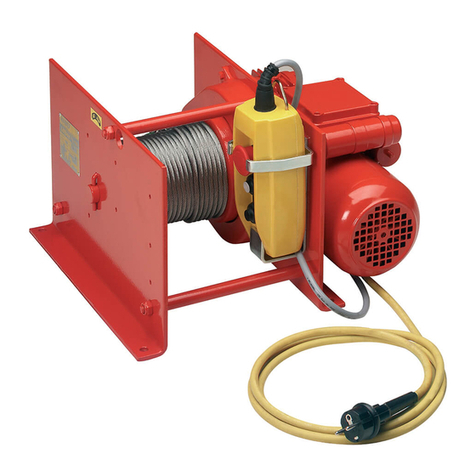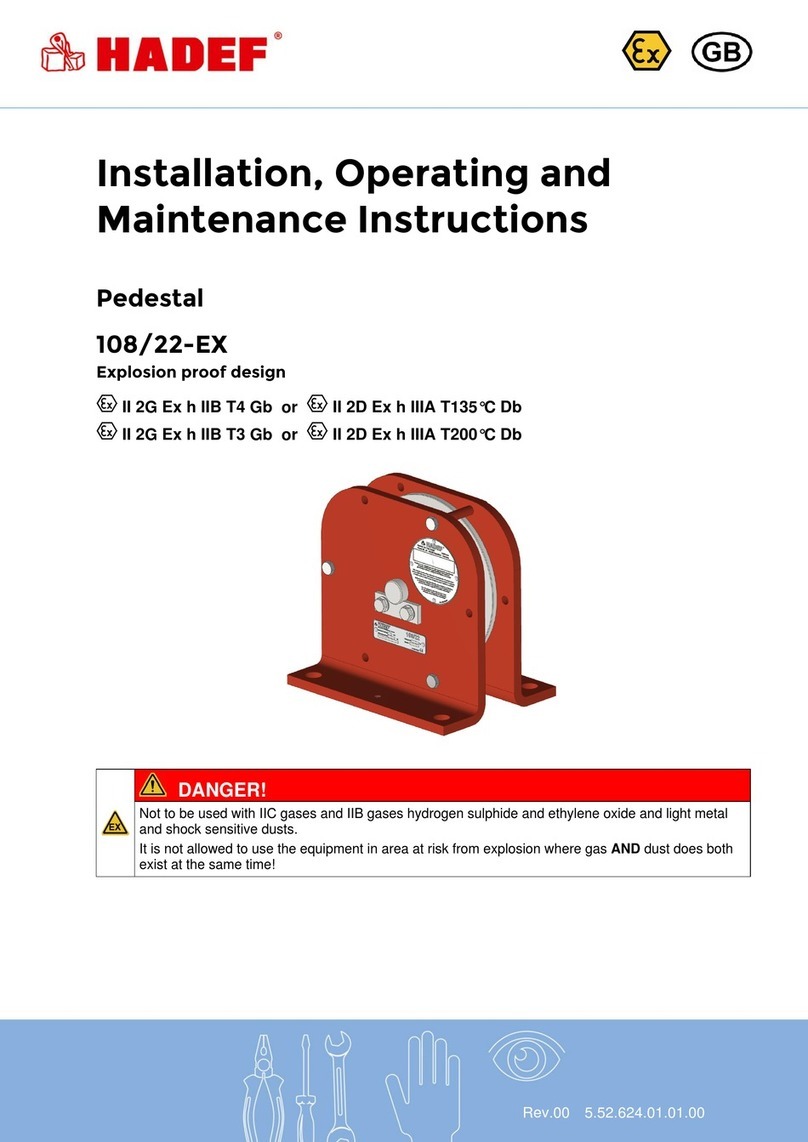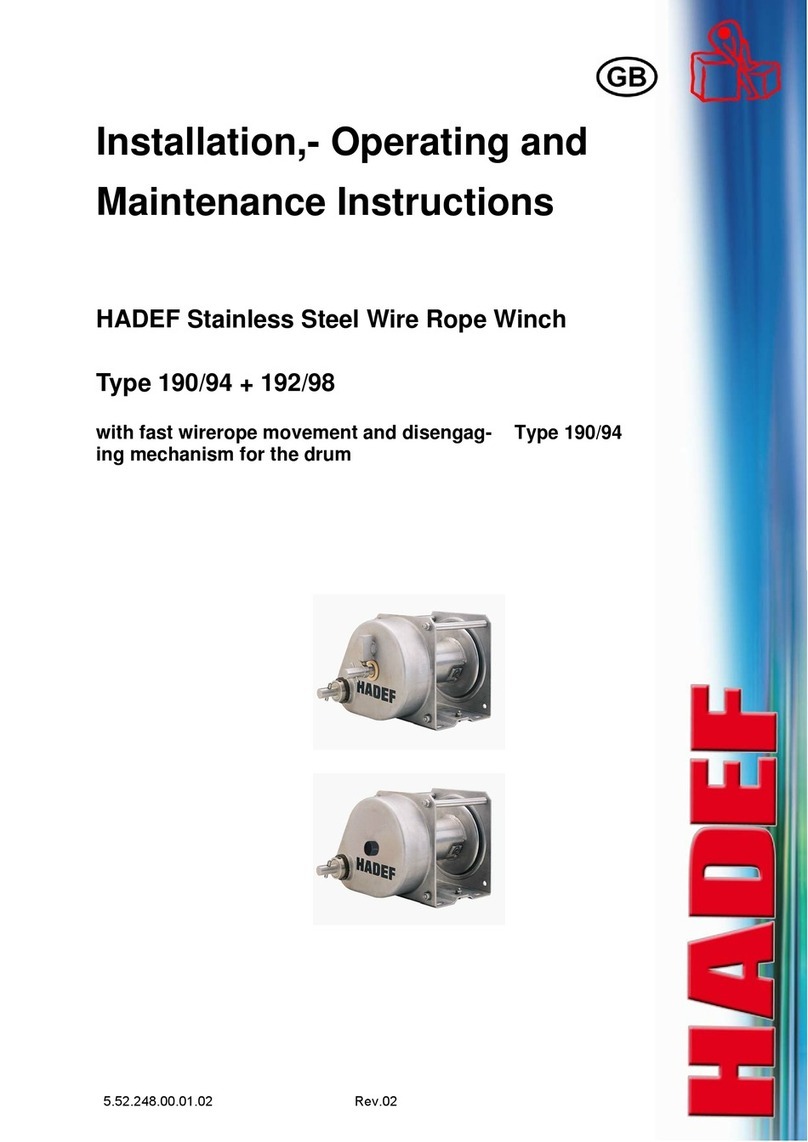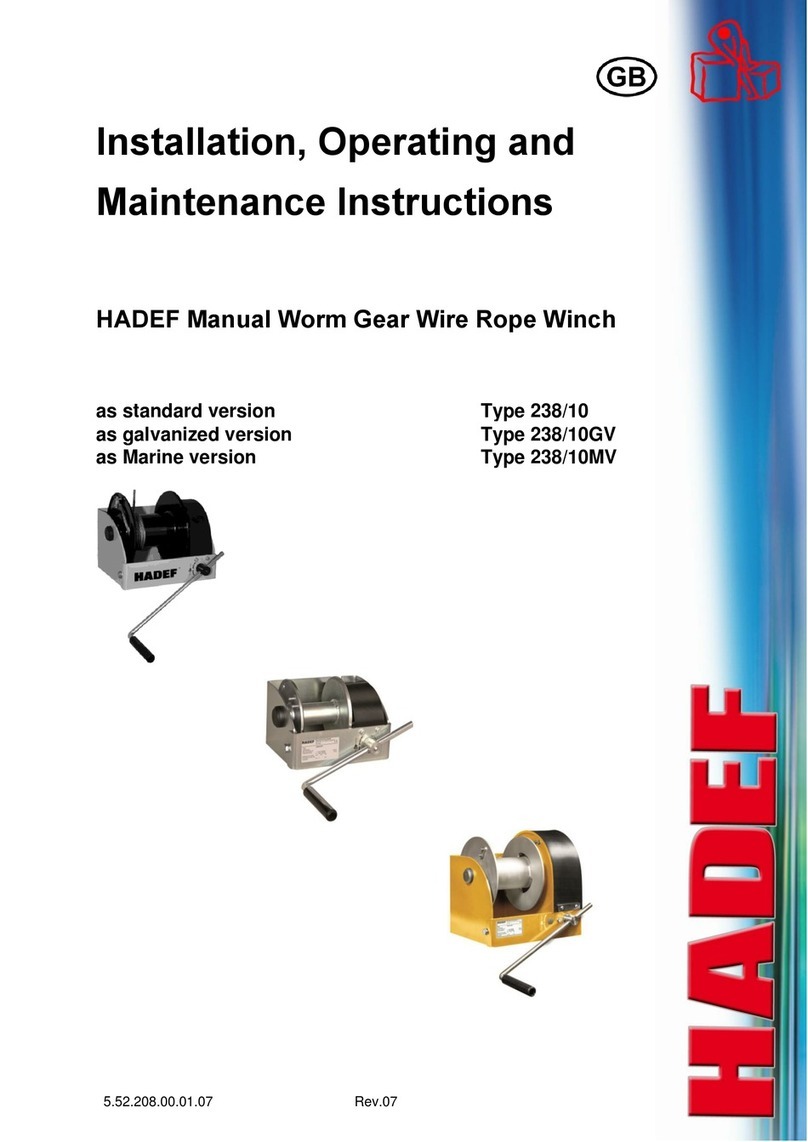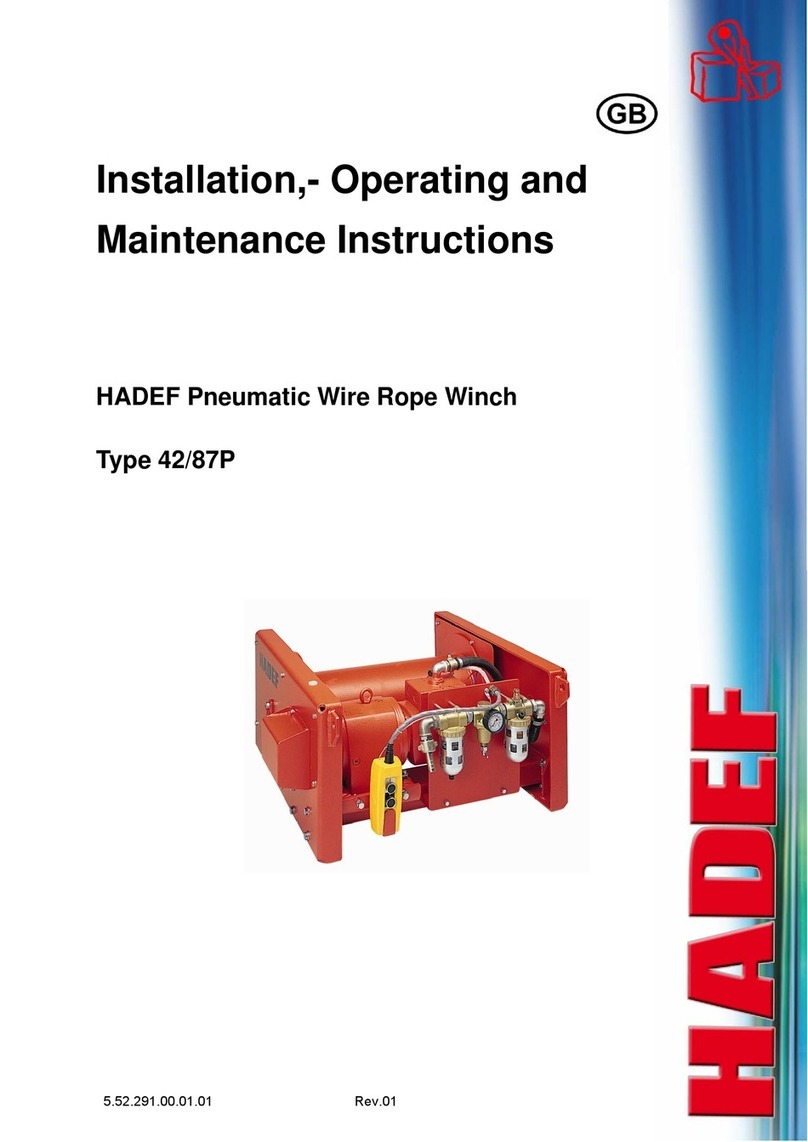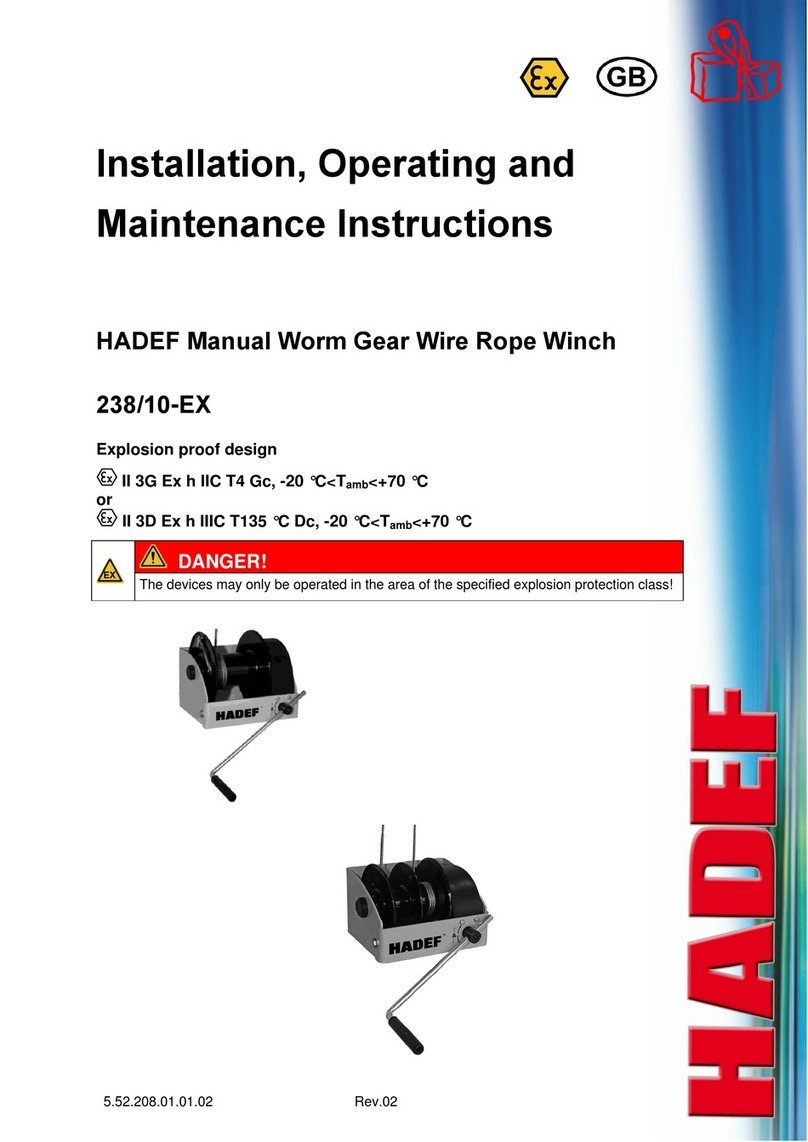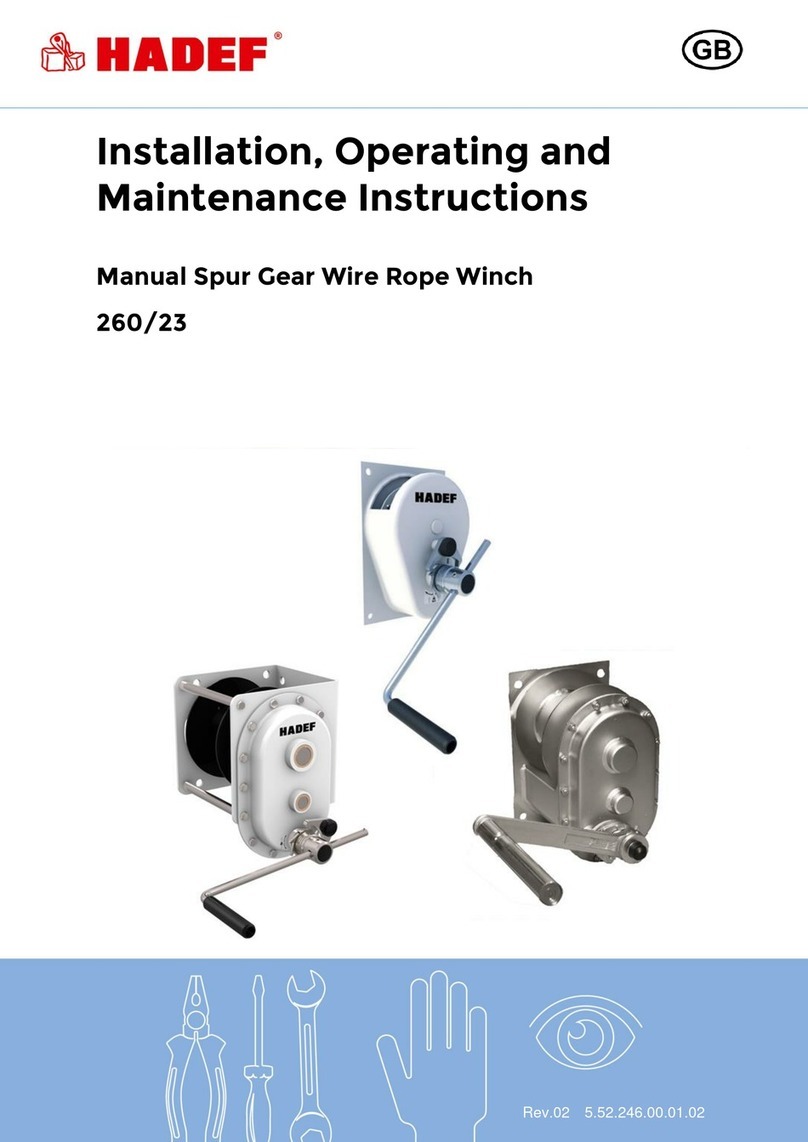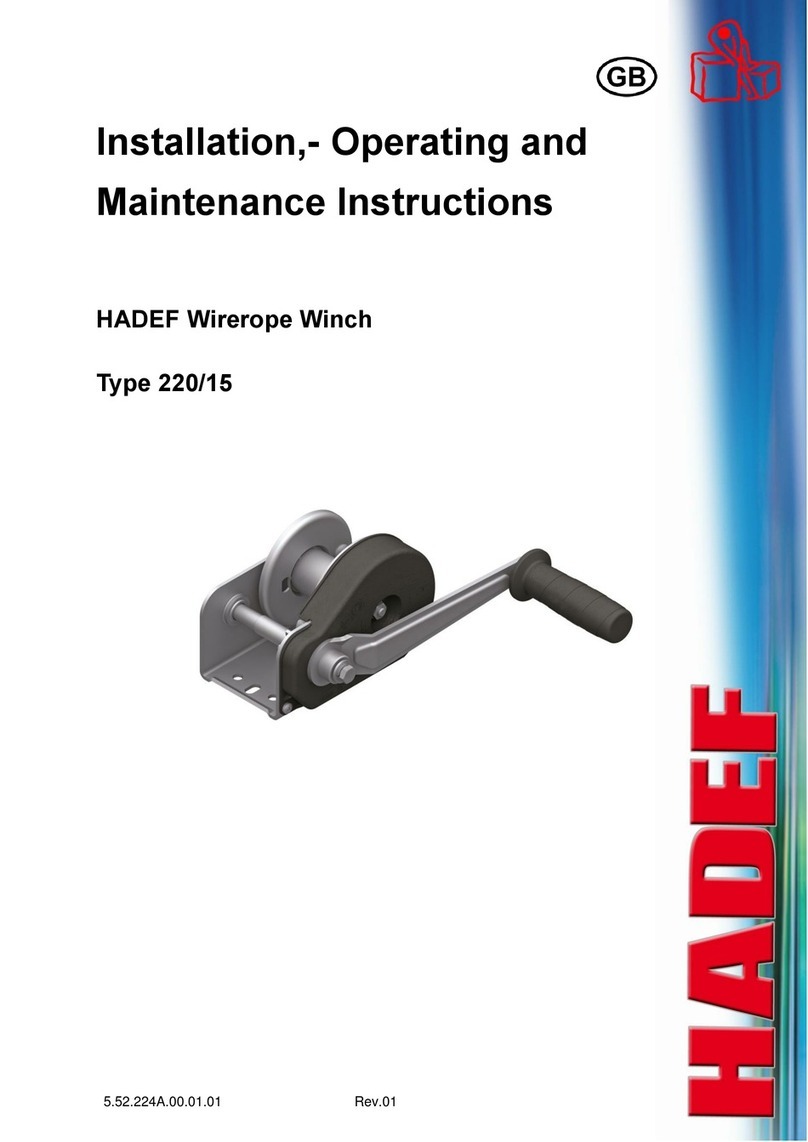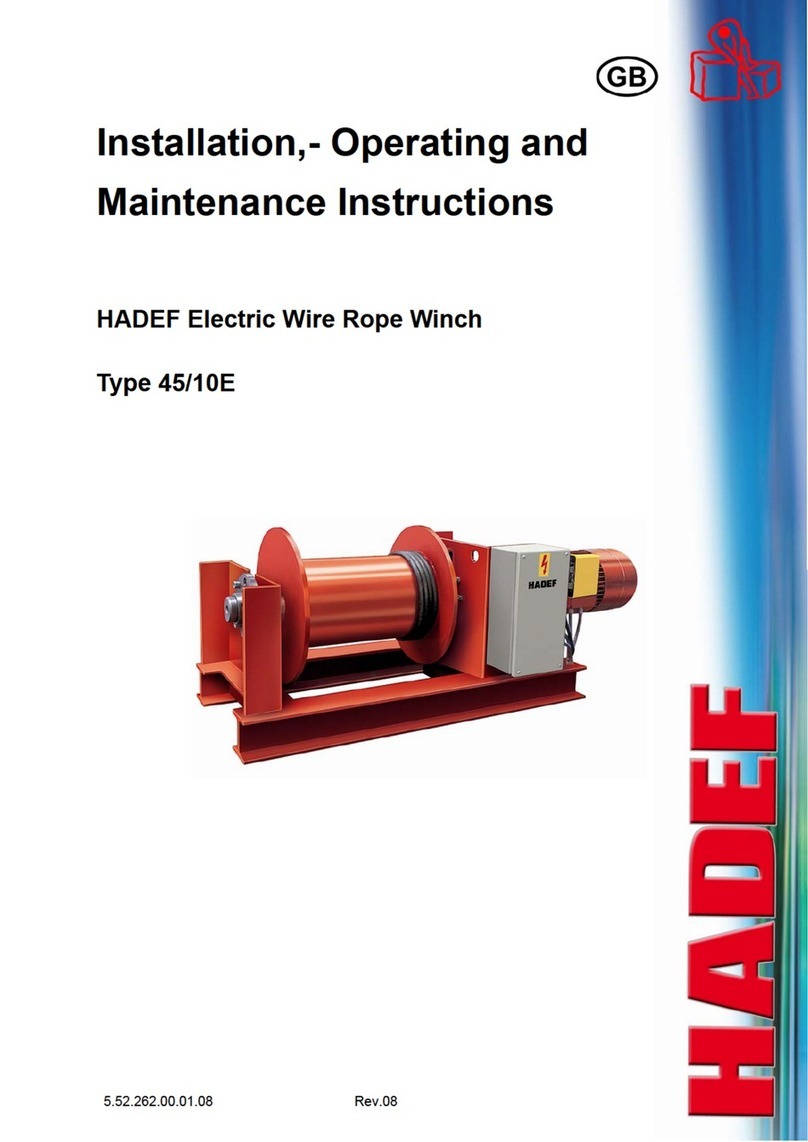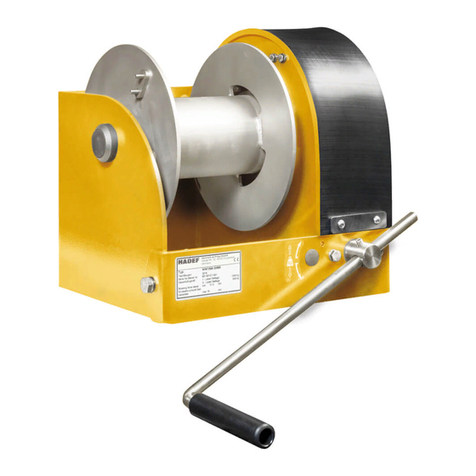
12 Maintenance...................................................................................... 20
12.1 General ............................................................................................................................. 20
12.2 Monitoring........................................................................................................................ 21
12.3 Pneumatic motor ............................................................................................................. 21
12.4 Limit switch for wire rope path (as option)................................................................... 21
12.5 Slack rope switch (as option)......................................................................................... 22
13 Inspection ......................................................................................... 22
13.1 General Overhaul for motor-driven units...................................................................... 22
13.2 Periodic checks ............................................................................................................... 22
13.3 Wire rope.......................................................................................................................... 22
13.4 Inspection intervals......................................................................................................... 23
13.5 Roller chain...................................................................................................................... 23
13.6 Chain wheel ..................................................................................................................... 23
14 Service............................................................................................... 24
14.1 Wire rope.......................................................................................................................... 24
14.2 Gear .................................................................................................................................. 24
14.1 Chain drive....................................................................................................................... 24
14.2 Cleaning ........................................................................................................................... 25
14.3 Pneumatic motor ............................................................................................................. 25
14.4 Lubricant selection ......................................................................................................... 25
14.5 Lubricant for food industry – selection (as option*) .................................................... 25
15 Trouble .............................................................................................. 26
16 Remedy ............................................................................................. 27
17 Decommissioning ............................................................................ 27
17.1 Temporary decommissioning ........................................................................................ 28
17.2 Final decommissioning/disposal................................................................................... 28
18 Additional documents...................................................................... 28
18.1 Pneumatic connections diagram ................................................................................... 28
1 Information
The products meet European Union requirements, in particular the valided EU Machine Directive.
The entire company works acc. to a certified quality assurance system as per EN ISO 9001.
The production of components at our work is subject to strict, intermediate checks.
After assembly, the products are subject to a final test with overload.
For the operation of hoists, the national accident prevention apply in Germany, amongst others.
Lifting equipment for use in areas prone to explosion complies with current legislation, standards and
regulations and is classified in the applicable Ex-protection class.
The stated performance of the devices and meeting any warranty claims require adherence to all instructions
in this manual.
Before delivery, all products are packed properly. Check the goods after receipt for any damage caused
during transport. Report any damage immediately to the forwarding agent.
This manual serves for safe and efficient use of this hoist. Illustrations serve to explain something and may
differ from the illustration of the existing unit as they only serve as an example.
Documentation of component manufacturers that may be supplied additionally, must be observed, in case of
differences between these documentation and our manuals, the specification of the our manual must be
observed.
We refer to the prescribed equipment tests before initial start-up, before putting back into operation and the
regular periodic inspections.
In other countries any additional national regulations must be observed.
